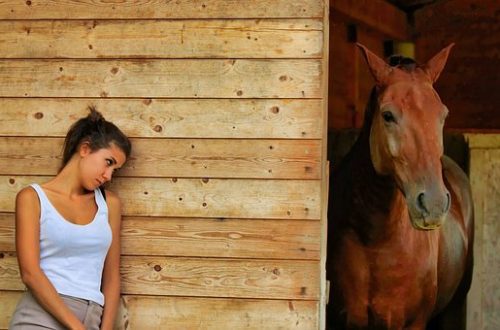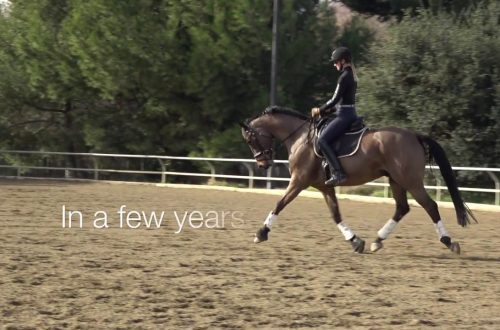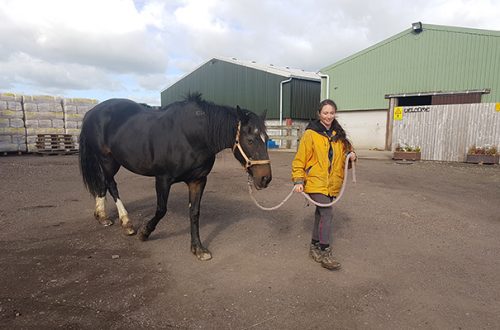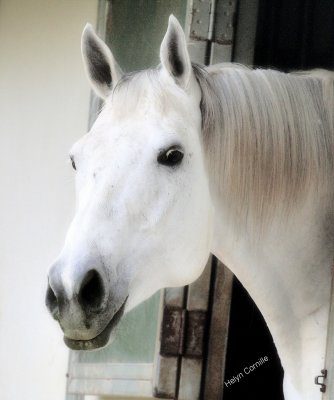
Unleash your horse’s inner dancer! (questions of biomechanics)
Unleash your horse’s inner dancer! (questions of biomechanics)
The muscles and skeleton of every horse is a marvelous, perfect and beautiful system when the horse moves correctly.
To improve the quality of gaits, natural balance and harmony, it is necessary to strengthen horse core.
Подписи: A. Axial rotation. Left. Right. Tilt or tilt. B. Flexion / extension. C. Lateral flexion. D. Flexion / extension. “Top” – lengthening the frame. Down – shortening the frame, collection. Axial rotation (tilt or roll)
The ultimate goal of riding should be to achieve harmony with the horse in psychological and physical aspects. This is how the magic happens. Traditional training methods focus on developing the muscles, reactions and fitness of the horse so that it has enough strength to jump over obstacles, gallop quickly or perform spectacular dressage moves.
However, there are key muscles deep within the horse’s body that can remain weak even in the most highly trained horses. And this leads to a limitation of their capabilities, gaits, underdevelopment of the back muscles and to enslavement. A complex system of internal muscles controls the elasticity of the horse’s spine (including the Psoas, Multifidus and Abdominal groups). Their condition is just as important for the horse to show good movement as the condition of the large superficial muscles.
The horse’s core muscles are often overlooked, but they are fundamental to movement.
In terms of riding, core weakness manifests itself in lack of straightness, limited movement, and a general feeling that the horse is difficult to control or follow. In general terms, a weak core is an uncomfortable and difficult horse to ride, and in some cases can even injure himself by misusing his body.
While in the saddle, we are faced with the impossibility of making contact. Having a certain experience and practice of working with different horses, over time, one can come to the conclusion that whatever the horse’s exterior, its breed, the history of training and rearing, or the discipline of specialization, the same muscle groups suffer from resistance – it’s just a matter of his intensity. Bad backs often “hide” under training problems, and this lasts until they are severe enough to be easily identified. A horse cannot learn if he is suffering from some kind of physical limitation, and he certainly cannot concentrate on learning if he is in pain. We humans are very much alike in this.
Horse Core Strengthening is a system of correcting and developing core muscles using yoga, dance and sports techniques adapted to the needs of the horse.
By targeting core work and spinal improvement, we can gradually loosen, mobilize, and then strengthen this vulnerable structure under the guidance of the rider. The couple can work together to develop a consistent understanding of what improves self-balance and develop these skills together.
The convergence of the vertebrae is the Achilles’ heel.
Syndrome of convergence of the vertebrae (Spinal Crowding Syndrome) are complications that occur when the back sags, the consequences of which are quite serious. Evolution has perfected the horse’s skeleton for millions of years, it has made the horse an excellent runner, but it has not made the horse’s back strong enough to carry the rider’s weight. The horse is strong in the croup and shoulders, but its long back is vulnerable and initially burdened with a large, heavy belly.
Small of the back. Thoracic department. Spinous processes.
The spine of a horse, unencumbered by the weight of the rider. The spinous processes are naturally located quite close.
When a young horse first takes a rider on his back, the new weight is placed over the middle of his spine, causing the rider to drop or arch slightly. This, of course, is invisible to the eye due to the presence of a saddle on the back.
When a rider sits on the long and weak back of a young horse, he forces the spine to sag.
This closes the already narrow gaps between the vertical spinous processes of the thoracic and lumbar spine. As the rider begins to work at the trot and canter, the horse will feel increasing discomfort as the spinous processes begin to act on the nerve endings between them.
To limit the discomfort caused by this “pinching” as the demands of the training process increase, the horse will instinctively tense the muscles of the back and “lock” the required area to restrict the movement of the spinous processes. To compensate for the lack of movement in the spine, it stretches with the limbs.
Since horses are creatures of habit, once a horse defends itself in this way even a few times, it will continue to do so on an ongoing basis, gradually losing the natural elastic properties of the spine. But they are the key to the elastic connection of body parts to each other.
As the intensity of the training increases, the horse is asked to work more and more canter and trot. He does not respond to work on bending the body as necessary, but tries to overstretch the joints of the limbs and turn the pelvis inward, which makes the gaits much worse than they could be.
It is for this reason that many well-bred horses are so fine and graceful in the field when they are young, but as they grow older seem to lose their natural cadence under the rider. We are sitting on the weakest link.
Weak link
The complex system of muscles that keeps the spine straight, especially when the horse is in motion, consists of the muscles of the Psoas, Multifidus and Abdominal groups. These are the muscles of the horse’s core, and they must be strong and short to counteract the sagging of the back and keep the gaps between the spinous processes when the rider is in the saddle.
Weak Multifidus muscles allow the back to sag, while strong muscles keep your back straight.
Complex core muscles control every movement of the skeleton. If one or more areas do not work properly, it affects all components of the system.
As the horse matures and we ask him to work with a more advanced topline, if there is any dynamic misalignment in the spine, the longissimus dorsi muscle will overstress to protect the spine from potentially uncomfortable rolling motion. This is not a conscious choice of the horse, just instinct.
The longissimus dorsi, which protects the spine, can become very tense.
Some horses stabilize and learn to work the way they have to. The joints of their limbs become very elastic, and the gaits, respectively, are uneven, one-sided and limited. In some cases, in horses with this syndrome, the back muscles become overly stiff, resulting in a strong behavioral resistance in response to pain. At this stage, even the appearance of “kissing vertebrae” is possible, when the vertebrae close under the convulsive action of the strong longest muscles of the back and begin to destroy each other.
Withers. Areas of contact between the spines are whiter. “Kissing vertebrae”.
Note the loss of bone density where the “holes” are visible!
Because horses do not show pain in the way that many other mammals do, over time, strong longissimus dorsi muscles pull the spine out of line, causing spondylosis. At this point, we begin to look for reasons why the horse has become reluctant to work under the saddle.
Normal vertebrae / Spondylosis is a pathology.
A secondary effect of the loss of elasticity in the spine is that the kinetic force is thrown forward to the shoulders as it can no longer be absorbed by the center (middle) of the horse. This pushes the lowest part of the cervical spine, the base of the neck, down into the area between the shoulder blades. As a result, the horse moves on the front, “downhill”, becomes heavy on the bit, hangs on the hands. This makes achieving straightness and balance physically impossible.
A tense back pushes the hocks back outward, the horse shifts the center of gravity to a strong forehand, destroying his natural balance.
This also leads to additional problems with the spine in those places where the angles between the vertebrae are limited.
Compression at the base of the neck (C7/T1).
If the horse shirks contact with the reins and the contact itself is very ragged, it is possible that the C7/T1 is not at a natural angle when he is working in the frame required for competition and the back sags behind the saddle. While riding, this causes discomfort and, as a result, resistance. Given the reason for what is happening, we can say that the horse, unfortunately, shows us amazing tolerance.
Just ask the horse for bоMore front movement to engage the hindquarters is not a way to improve the core, especially if the spine has already “learned” to sag as the horse is working against itself. In fact, more momentum only exacerbates the problem.
How can you tell if a horse has convergence of the vertebrae?
In motion, our bodies are just a biological mechanism, a machine for movement. As with any machine, the corners that drive us must be carefully aligned. So, a car with a bald tire will move in the appropriate direction. Any mechanical displacement quickly wears out the parts due to their excess stress. If the horse’s spine is not properly aligned, all the delicate dynamics of joint and limb movement go haywire, causing all sorts of imbalances and limitations. Just as it is difficult for the horse, it is also difficult for the rider (he cannot work gently and easily on the horse, and therefore increases his tension). Our controls become incomprehensible to her, creating a vicious circle of protective tension that is difficult to break. Since horses are mostly good-natured and silent animals, they will not scream in pain, which makes it difficult to determine the initial signs of convergence of the vertebrae. Often these symptoms are seen as individual problems without any specific cause, but they can still be identified.
Vertebral convergence symptoms are grouped and we can start by giving each horse a “core score”. If we evaluate her spine while riding on a scale of 0 to 5, where 0 is a flawless, loose and strong spine and 5 is a painful spine with kissing vertebrae, then we can rely on the following table:
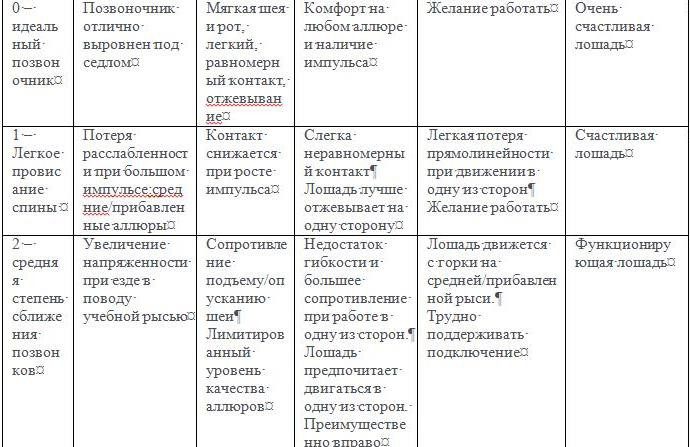
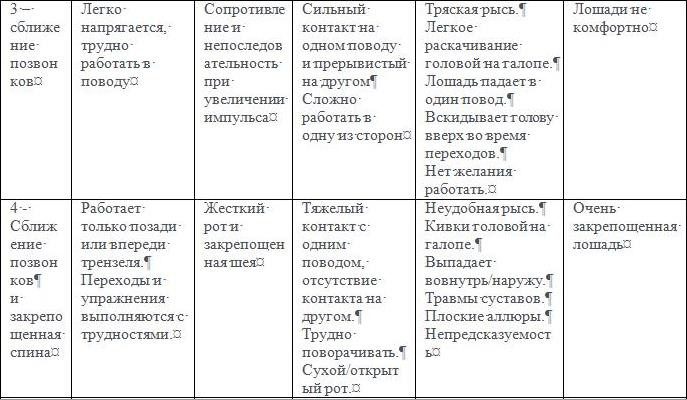
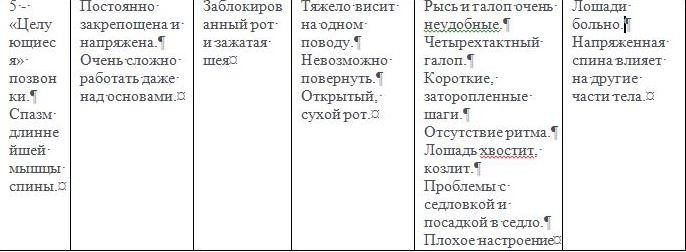
When a machine lacks dynamic equalization, individual parts will be forced to carry a stress they were not designed for. Unfortunately, the secondary effect of the convergence of the vertebrae is to cause undue stress on the area most used by the horse to compensate and properly align the back. Very often, the consequences occur in the limbs (seemingly unrelated problem).
A good example is hoof flaring. If the hoof is more flared to one side, then this indicates that the horse loads the leg more on that side.
Uneven hoof growth indicates uneven loading.
When a limb is loaded in a way it should not be loaded, over time, the manifestations will become more noticeable. Hoof problems show us that the limb is subjected to excessive repetitive stress. By correcting the muscles of the core, we can reduce the manifestations of this, heal the limb completely or partially.
Delimitation and Leveling
If we want our horses to dance, we must train them as we train human athletes. Continuous analysis of human training methods allows us to focus on making the core stronger and more resilient before we add power and speed to the work. We learned a long time ago from the example of human athletes that until the core is in excellent condition or at the peak of its form, pain will accompany us.
Using the example of a person, we found out that an elastic and strong core is the foundation of proper, stable training.
We must return the horse to the natural balance that Mother Nature designed for them. The horse must bend through the whole body, the movements must “flow” from the center outward.
Horse – A tight back limits power. Cheetah – flexible back increases power.
If we compare the dressage work of a high prize horse with ballet, it becomes clear that the traditional work of the walk, trot and canter on a free rein in both directions is simply not enough to achieve the necessary form for the horse to perform movements that require a high level of balance, flexibility and elasticity, because in this way we simply relax and liberate her limbs. The whole body must be trained, weak points worked out and strengthened – only then what was difficult will become easy, beautiful and stable.
By comparing anatomy, we can isolate the principles that unite us. If something benefits a person, then it can also benefit a horse.
Strengthening the Horse Core is a system that takes techniques from bodybuilding programs such as yoga, Pilates, and applies the principles of these techniques to work on the weak points of the horse. The same philosophy of controlled, progressive, strength-building movements performed while working under the saddle is used. Because the exercises are performed in partnership with the rider, it not only creates the physical conditioning and confidence that the horse needs, but also develops the psychological and physical bond between partners, making advanced work possible and more harmonious.
When using this system, four elements should always be kept in mind. By understanding them, we can make the right decisions about when to continue, when to stop, and when to increase the load.
1. Stretching – lengthen the muscles and spine -uXNUMXe pressure decreases and range of motion increases.
2. The trust – we strengthen the horse’s confidence in his own body, and this will allow him to move freely and bend under the saddle without showing stiffness.
3. Force – the development of the muscles of the cortex and peripheral joints will allow you to move freely and to the fullest extent possible.
4. Education — we need to teach the horse to allow us to control this new freedom with our controls.
Stretching is yoga for the horse, which helps to release tension and remove restrictions.
Below are four introductory exercises that look quite simple, and in some ways they are, but they will greatly improve the horse’s willingness to bend at the spine.
These exercises combine stretching and low speed turns that break down the back’s defensive “blocking” habits, which encourages the horse to learn to relax and allows it to progress into the strength building phase of exercises that enable us to achieve true connection with momentum. Movements should be repeated slowly and gradually until they become light and smooth. Just like a pianist repeats octaves, honing the technique of finger movement to perfection. Since convergence syndrome is partly a psychological defense, the effect is not only to strengthen the horse’s core, but also to practice the basic “movement language” that develops during communication between horse and rider. This language needs to be improved in order to develop confidence and strength.
Do the exercises first at the walk and repeat until the horse moves more smoothly before moving on to the daily training program. In the photo you will also see a human version of the exercise to demonstrate the similar effect of the exercise on the horse’s body.
1. Crescent Moon Yoga Exercise – Long and Low Curl and Stretch
Ride a small six-meter circle around a cone or block, on a long rein, with the horse well bent inward. This stretches the protective muscles of the back and helps to release lateral tension in the back. Don’t push, don’t encourage. Relax, wait, and repeat as the horse’s head sinks lower and lower into the sand, the muscles confidently stretching. Do the exercise first at the walk so that both you and the horse can get comfortable, then try working at the posting trot. Repeat until you feel the horse move more smoothly and want to pull down and forward while flexing. The “half moon” has the same effect on our bodies as it does on the body of a horse.
Flexion and stretching. Yoga exercise “Crescent Moon” side stretch.
2. Yoga exercise “Mill” – side step stretch
Just as the windmill affects the human body, stretching during leg yielding encourages the horse’s hips to rotate in the opposite direction to the shoulders, encouraging the spine to turn freely and release tension. The horse may initially block itself. Continue gently and intelligently and she will relax, drop her head willingly towards the inside rein and walk sideways with more and more elasticity.
Low, deep bending and crossing of the legs. Yoga exercise “Mill”.
3. Yoga exercise “Half-lunge” – turn on the front
Great for opening gaits and even better for activating the Psoas muscle system. This exercise works on many levels, and when it is later perfected, the horse will begin to work while maintaining a smooth topline. This exercise teaches the horse to yield to the side with light inside leg pressure, which is the foundation of straightness control, the foundation of lateral work, and the foundation of good cornering later on. It also strengthens the muscles responsible for the lateral rotational movements of the pelvis, elevates the spine and provides space between the spinous processes, which helps relieve tension when they pinch the nerve endings. Get one or two right steps first, and then ask for more. The horse must step under the body with the inside hind leg and rotate around the inside front leg. Support the leg by gently touching the horse’s inside hind leg with the whip, making sure he doesn’t step back or leave with his outside shoulder. When you can easily drop the inside rein and the horse maintains contact with the outside rein, you have succeeded.
Turn with head and neck held high. Turn with the neck and head down. “Half fall”.
4. Yoga exercise “Position of thread in a needle” – pirouette on the go
This exercise is very important for developing the flexibility of the horse at the shoulders and improving the level of communication between horse and rider. Standing still with the inside rein open and bending the horse inward, increase the pressure on the outside rein until the horse gives way. This improves the range of motion of the chest muscles, encouraging the horse to lift and hold the spine higher between the shoulder blades. This raises the horse’s center of gravity and allows him to lift his forehand, move elastically uphill, which gives more room for the hind legs to take deeper steps under the body and therefore connect. As a result, the rider will be able to gently work the outside rein, working on the shoulder. This will provide a good basis for performing movements such as shoulder in, half and pirouette.
The shoulders turn around the inside hind leg. Yoga exercise “Position of a thread in a needle”
When embarking on this work, the rider must think of a soft and gentle effect on the horse, as resistance is a combination of both psychological and physical factors. Great care must be taken when you begin to ask the horse for a significant effort – he should not trigger defensive functions.
Tips:
1. The “long and low” movement stretches the horse’s body, but as you get better, do the exercise at least once “on the bit”.
2. Sit in the center of the saddle, do not slide to the side, no matter what happens.
3. If you can’t sit at a trot or canter, don’t do it. Work on the exercises to free up the horse’s spine, and then try the trot and canter again when the gaits become more comfortable.
4. When bending a horse, never pull on the reins, just hold it properly until the horse yields in response to the leg. If she wants to put her head down and stretch, let her do it.
5. You and your horse need to understand each other very well in order to really work as one. If you feel like you can do a little more, give it a try and let your horse be your guide.
6. Core Score 0 – The horse walks, trots and canters in balance with its nose close to the ground on a completely free rein. This is your goal.
7. These exercises help to cross the legs. Use boots and bells!
8. Every workout is a new beginning. It is never too late for rider or horse to leave the past in the past.
The suggested exercises are part of a refresher program that can be used as a warm-up before the horse’s daily training. If practiced daily, in a relatively short time, the horse will begin to benefit more from basic training, as he will perform the work that requires more effort, already prepared, after stretching.
Conclusion
When a horse reaches a Core Score of 0, he will be in the necessary physical condition to perform his chosen main training program.
If your horse’s Bark Score is 4 or 5, take it to your veterinarian first. An x-ray of the spine will give you an idea of the presence of kissing or contiguous vertebrae. Depending on the severity of the situation, you will have several options, including surgery or anti-inflammatory drugs. My preference as a trainer is the Multifidus muscle system retraining, which will remove the original cause of the lack of alignment rather than alleviate the symptoms. When everything is done correctly and carefully, even very serious cases can be solved.
It is also useful to resort to the services of horse masseurs. Who doesn’t feel better after a massage?!
I hope you found this article interesting and helpful. Please never forget that the desire of a horse to work is its most valuable and most revered quality by us people. If we really want to connect with these beings, we must reciprocate by recognizing the silent signals of embarrassment hidden by their generosity.
May the horse be with you!
Visconte Cocozza (source); translation Valeria Smirnova.



